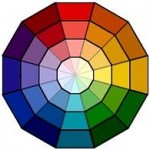Make eye contact, smile and shake hands, repeating the person’s name in the greeting. For example:
- “Hello Mary. It’s nice to meet you, I am …;

- Or ‘It’s a pleasure to meet you.”
The most formal greeting would be
- “How do you do, Mary, I am…” The reply to “How do you do.” is “How do you do.”
If you would like to meet someone, when approaching that person:
- Make eye contact and smile.
- Introduce yourself with your first and last name.
- Shake hands firmly, web to web. Lean into the handshake. Hands should be vertically parallel. Shake hands 2-3 pumps.
This shows confidence and sincerity
Handshakes to avoid
- The bone crusher – some people have no idea how strong their grip is.
- The limp handshake (sometimes called the dead fish) – gives a non-confident, wishy-washy impression.
- The power grip (when someone grips with their hand on top) – in body language this indicates that the person perceives themselves as more important or is trying to get the upper hand.
- Gabbing the finger tips sometimes very softly- this can be a cultural difference not unusual on some Asian cultures – in western society we prefer a web to web handshake
These handshakes are a bit too friendly for business. You may be perceived as coming on too strong. Better to be saved for friends and family.
- 2 handed handshake (when you cup both hands around the other persons hand) – is very nurturing and friendly.
- Keep your hands to yourself. Avoid shaking hands while holding the other persons elbow or shoulder – too friendly for business
For another way to get a grip on your handshake watch the video on Living Vancouver with host, Jaeny Baik and Kimberly Law, AICI CIP. Click on Watch the Show in the top menu and then on It’s a Living in the right column.






